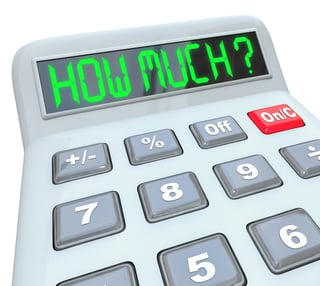Costing and Pricing is Simply Better with Modern ERP
Most businesses do well at figuring their cost of goods for simple products. But, once a product becomes more complex in terms of its raw material inputs, supply changes, or commodity price fluctuations, costing can be a challenge. If you cannot understand your products’ true costs, then you cannot price them competitively either. That leads to eroded profit margins or lost business.
Today’s modern ERP systems do an excellent job of tracking all costs related to your products.  With a good system, you price your products in an optimal manner by understanding your cost. With a confident understanding of cost, objective understanding of margins will result - even in the face of fast-changing market conditions.
With a good system, you price your products in an optimal manner by understanding your cost. With a confident understanding of cost, objective understanding of margins will result - even in the face of fast-changing market conditions.
A Complete Set of Cost Data
Today’s ERP systems can bring together all the components of a product’s cost into one location. You can view, modify, and report on cost. So, for a complex product, you can define cost for both production (make) items and purchase (buy) items.
If an item is already in stock, you will understand its cost based on the stock valuation method you selected in ERP (I.e. FIFO, LIFO, etc.). In fast-changing market conditions, you can change your stock costing at the click of a button so that you don’t validate your stock in an unrealistic manner.
For component parts (assemblies, sub-assemblies, raw materials) of a finished product, you need to be able to understand, at all times, your costs for each. Using an ERP system, you will be able to break down views of your final product into its component parts, each of which shares its cost data automatically when rolled up to the cost of the material master for any finished product in which it is used.
Updating Your Costs
Equally important to seeing all your cost data is having up-to-date market realities reflected in those costs. Again, an ERP system lets you do that with a single data update. For example, a feature called Material Revaluation in one package, enables users to make changes to existing stock prices. So, when the market prices of your material inputs change dramatically, you simply adjust the cost, and the accounting changes are automatic.
ERP’s New Reporting Power
Today’s ERP systems let you report on all aspects of product cost as well as profitability. That’s because ERP integrates across the business to provide views of a product’s sale price, materials costs, indirect costs, and ultimately, profit margins. The standard and customizable reporting incorporate into popular ERP systems yield daily, weekly, monthly, and annual views into whichever cost data you desire ─ finished products, sub-assemblies, raw materials, overhead, etc. For quick checks on your business health at a higher level, the ERP system can roll up cost and sales price data to demonstrate how profit is changing over time. You can even gain insights into your profitability on a customer-by-customer basis.
What’s most attractive regarding the costing and pricing capabilities in modern ERP systems? They provide this functionality in easy-to-use solutions with intuitive user interfaces. Setting up your ERP to report on product costs, pricing, and profitability has never been easier, and Acuity can help you every step of the way. Please contact us.




